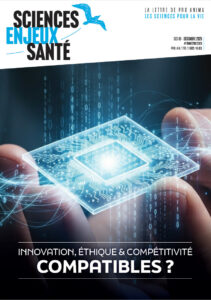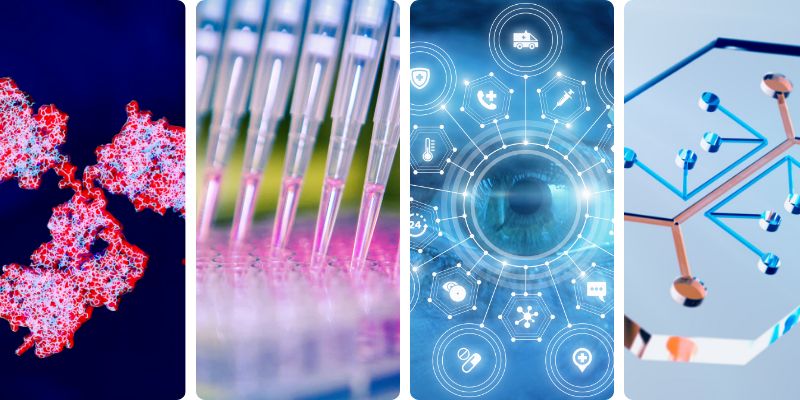
News on non-animal methods
JULY 07 - 11, 2025
The NAM newsletter will be back in September
Wishing you a beautiful summer
NEWS, REPORTS & POSITION STATEMENTS
1. DILI detection: Building Confidence in MPS for Regulatory Applications
At the intersection of innovation, collaboration, and science lies an exciting new project led by the 3Rs Collaborative. This effort brings together regulators, technology providers, end-users, and non-profits to advance the responsible use of microphysiological systems (MPS) in regulatory applications.
In partnership with the FDA Center for Drug Evaluation and Research (CDER), 9 commercial providers, 2 end-users, The National Institutes of Health NIH-NICEATM, and Critical Path Institute (C‑Path), they are embarking on a project to evaluate the use of liver MPS to detect drug-induced liver injury (DILI). Their goal is to assess variability across multiple platforms using the same experimental protocol, with the ultimate goal of enhancing confidence in the accuracy, reliability, and standardized characterization of these models.
Read the The 3Rs Collaborative linkedin post
Read more about the MPS initiative
2. NIH 2025 – 2030 Strategic Plan for Data Science
NIH has finalized its forward-looking strategic plan that will guide data science initiatives in biomedical research through 2030. In a new blog post, Dr. Susan Gregurick, NIH Associate Director for Data Science, discusses how this strategic blueprint that will: Integrate emerging technologies into biomedical research; Build robust data infrastructure for scientific discovery; Advance standards for data sharing and interoperability; Develop the next generation of data science workforce.
This strategic vision aligns with the growing recognition that data science serves as a critical catalyst for health care innovation and improved patient outcomes for all Americans.
3. PARC : Mapping Europe’s capacities in chemical hazard research
Over 70 experts from 20 countries have contributed to a comprehensive mapping of Europe’s research capacities, laying the foundation for a more integrated and sustainable (eco)toxicological research environment. The survey, conducted from October 2024 to February 2025, gathered information on ongoing research activities, available tools, data infrastructures, training resources, unresolved research questions, and future needs in both prospective and retrospective hazard assessment.
Several core challenges were identified, including the need to better understand the chemical mixture effects and toxicity mechanisms, develop non-animal testing methods, improve in vitro to in vivo extrapolation, and address cumulative and low-dose exposures.
To accelerate research quality and make data use more effective, participants highlighted key future priorities: the development of advanced testing methods, predictive in vitro and in silico tools, harmonised methodologies, AI integration, open science infrastructures, and stronger cross-border collaboration.
4. Pragmatic workflow for human relevance assessment of toxicological pathways and associated NAM
Currently, safety assessments of chemical substances are predominantly based on animal data. Multiple considerations call for the use of alternative testing strategies that are based on new approach methodologies (NAMs). However, the human relevance of these testing strategies is usually uncertain. This necessitates a harmonized and accepted workflow for assessing their applicability for regulatory purposes.
This report proposes such a workflow, applicable for assessing the human relevance of a toxicological pathway and the relevance of NAMs related to the different components of the pathway. The workflow starts with an established toxicological pathway, of which the adverse outcome is relevant for human health risk assessment and that has sufficient weight of evidence. Human relevance is assessed through three main questions, related to the different components (steps) of the pathway, the pathology of human syndromes that have a similar adverse outcome, and quantitative aspects.
5. Can AI build a virtual cell? Scientists race to model life’s smallest unit
Biologists have been using computers to model cellular behaviour for decades. Efforts to create virtual cells are in their early days, but the idea has attracted intense interest in both academic and industry laboratories worldwide. “This is a gigantic task,” says Jan Ellenberg, a molecular biologist at the Science for Life Laboratory, a national research organization in Solna, Sweden. “What is possible now and needed now is to have the first pioneering projects that show this can, in principle, work.”
The current push to develop virtual cells takes advantage of advances in AI that allow it to develop sophisticated representations of data, such as text in the case of large language models, when fed vast quantities of it. “Building models that learn from data is revolutionary,” says Stephen Quake, head of science at the Chan Zuckerberg Initiative (CZI) in Redwood City, California, and among the researchers leading a charge to create virtual cells.
TOOLS, PLATFORMS, CALLS
6. PEPPER 2025: Call for Endocrine Disruption Test Methods
Every year, Pepper selects test methods on endocrine disruption, with a high level of technological maturity, developed by private or public laboratories, for which it will support validation. This action aims to diminish the lack of validated methods.
Methods must meet the following criteria: maturity (i.e. solid written protocol, sufficient data, see ReadEDtest); expectations of regulatory institutions(e.g. modes of action with no tests available today); integration into an assessment strategy; good potential for dissemination in laboratories; absence of logistical or legal obstacles. Insilico methods, methods that are not part of the 3R framework, that are already being validated or that replicate methods that have already been validated, are not eligible.
Submissions deadline: August 31, 2025.
7. TSAR and BimmoH: the EU Tracking System for Alternative Methods towards Regulatory Acceptance
At the heart of EURL ECVAM’s infrastructure is TSAR: the Tracking System for Alternative Methods towards Regulatory Acceptance. Developed more than a decade ago, TSAR follows the journey of alternative methods submitted for safety testing through every milestone (submission, validation, peer review, international standardization, and final regulatory adoption).
Set to launch later in 2025, the BioMedical Model Hub (BimmoH) is EURL ECVAM’s newest move yet to capture the explosion of non-animal models emerging from biomedical research. Powered by artificial intelligence and trained on PubMed, BimmoH is designed to extract, filter, and categorize the scientific publications that use human-biology based models allowing the use of non-animal approaches. “In some areas, we’re very close to phasing out animals,” says Dr. Ingrid Langezaal, toxicologist and scientific officer at EURL ECVAM. “In others, there’s still a long road ahead. But data helps us move forward.”
8. Young TPI 2025 Conference: Connecting the Dots
October 23 – 24, 2025, in Trippenhuis, Amsterdam, join the TPI community for a two-day conference that brings together young professionals, researchers, educators, and policymakers committed to the animal-free transition. Through keynote lectures, hands-on workshops, poster sessions, and networking moments, the event aims to connect diverse fields and spark collaboration in the areas of: Technology/Research Models; Transition Science; Education; Policy & Legislation
Submit an abstract to share your work during the conference before the deadline: August 15, 5pm CEST
Attend the conference, registration deadline: Sept. 30, 5pm CEST
Read more on the Young TPI website
SCIENTIFIC DISCOVERIES & PROTOCOLS
9. OrganoidChip+: a Microfluidic Platform for Culturing, Staining, Immobilization, and High-Content Imaging of ASOs
High-content imaging (HCI) and analysis are the keys for advancing our understanding of the science behind organogenesis. To this end, culturing adult stem cell-derived organoids (ASOs) in a platform that also enables live imaging, staining, immobilization, and fast high-resolution imaging is crucial. However, existing platforms only partially satisfy these requirements.
In a new study, researchers present the OrganoidChip+, an all-in-one microfluidic device designed to integrate both culturing and HCI of ASOs all within one platform.The OrganoidChip+ incorporates several additional features to the previous OrganoidChip tool for culturing organoids in addition to fluorescence staining and imaging without the need for sample transfer.
10. Substantiating chemical groups for read-across using molecular response profiles
By grouping structurally similar chemicals, toxicity endpoints from data-rich substances can be read across to data-poor substances, supporting environmental and human health risk assessment without animal testing. However, structural similarity alone is insufficient, and additional supporting data can strengthen a grouping justification.
In a new study, researchers aimed to demonstrate how multi-omics bioactivity data can increase confidence in a grouping hypothesis, where the bioactivity profiles can reflect a chemical’s mode(s) of action. They investigated three structurally similar phthalates and three uncouplers of oxidative phosphorylation, applying structure-based grouping approaches and short-term exposures of the ecotoxicological test species Daphnia magna to generate multi-omics data.
Read more in Regulatory Toxicology and Pharmacology


